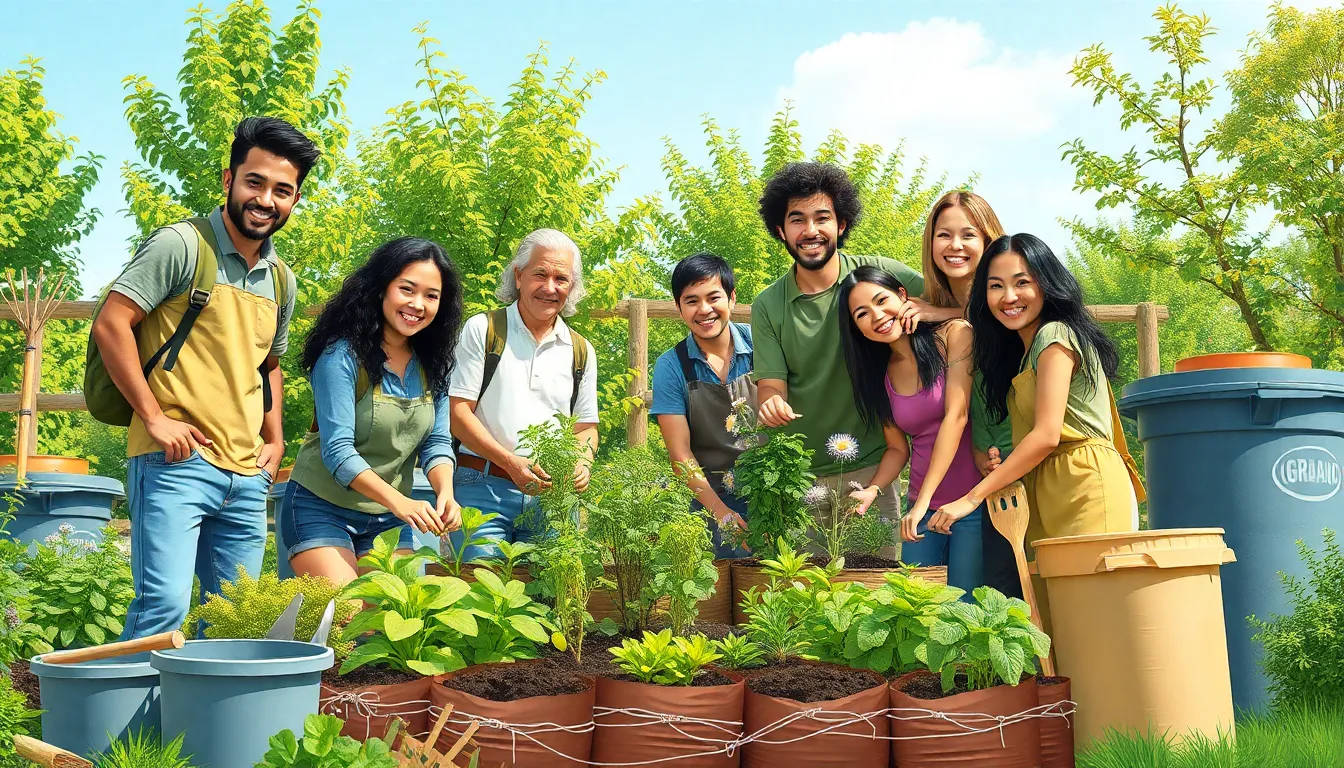In a world where plastic seems to outnumber people, sustainable living solutions aren’t just trendy—they’re essential. Picture this: a life where eco-friendly choices make you feel like a superhero, saving the planet one reusable bag at a time. It’s not about giving up your morning coffee or trading in your car for a bicycle. Instead, it’s about making smarter choices that allow everyone to thrive without sacrificing comfort or style.
Table of Contents
ToggleUnderstanding Sustainable Living Solutions
Sustainable living solutions encompass practices that reduce one’s ecological footprint while promoting a balanced lifestyle. Choices like using energy-efficient appliances contribute to lower electricity consumption. Implementing water-saving fixtures in homes lessens water wastage.
Investing in reusable items like shopping bags, water bottles, and containers plays a significant role in minimizing plastic use. Home composting transforms organic waste into valuable fertilizer, benefiting gardens and reducing landfill contributions. Opting for locally sourced food enhances community support and decreases transportation emissions.
Various modes of transportation also contribute to sustainability. Using public transport or carpooling reduces individual carbon output. Biking or walking for shorter distances promotes health while benefiting the environment.
Many individuals explore renewable energy sources such as solar and wind power. Switching to renewable energy can significantly decrease reliance on fossil fuels. For those who cannot install renewable systems, purchasing green energy from providers offers an alternative.
Community initiatives and educational programs often drive awareness of sustainable practices. Participating in local clean-up efforts fosters community pride and improves natural surroundings. Engaging in workshops about sustainable gardening or cooking promotes self-sufficiency and resourcefulness.
Adopting minimalistic lifestyles also aligns with sustainability. Reducing clutter leads to less consumption and waste. Mindful purchasing prevents unnecessary items from entering homes and encourages valuing quality over quantity.
Ultimately, implementing these sustainable living solutions not only enhances individual lifestyles but also collectively fosters a healthier planet for future generations.
Benefits of Sustainable Living Solutions

Sustainable living solutions offer numerous advantages that positively impact both individuals and the planet. These benefits range from environmental improvements to direct economic gains.
Environmental Impact
Sustainable living practices significantly reduce carbon footprints. Utilizing energy-efficient appliances lowers electricity consumption, conserving natural resources. Implementing water-saving fixtures minimizes waste, addressing water scarcity issues. Composting kitchen scraps not only enriches soil but also diverts waste from landfills. Sourcing food locally reduces transportation emissions while supporting community agriculture. Public transport and carpooling decrease traffic congestion and lower air pollution levels. Overall, these practices contribute to a healthier ecosystem, promoting biodiversity and minimizing pollution.
Economic Advantages
Adopting sustainable solutions yields economic benefits for individuals and communities. Energy-efficient appliances lower utility bills over time, providing substantial savings. Investing in reusable items reduces ongoing costs associated with disposables, creating a more affordable lifestyle. Composting can decrease waste disposal fees while enhancing garden productivity. Local food purchases keep money within the community, strengthening local economies. Public transportation saves on fuel and maintenance costs for personal vehicles. Overall, these economic advantages enhance financial stability while fostering sustainable local growth.
Practical Sustainable Living Solutions
Sustainable living solutions play a crucial role in minimizing environmental impact and enhancing everyday life. Various strategies exist to promote eco-friendliness while maintaining convenience.
Energy Efficiency
Energy-efficient appliances significantly lower energy consumption. Utilizing LED light bulbs reduces electricity usage by up to 75%. Smart thermostats allow for optimal heating and cooling, adjusting based on occupancy. Regular maintenance of heating and cooling systems enhances their efficiency. Installing solar panels contributes to clean energy production, decreasing reliance on fossil fuels. Opting for energy-saving settings on devices also minimizes waste.
Waste Reduction
Implementing waste reduction strategies fosters a cleaner environment. Composting organic waste diverts it from landfills, enriching the soil instead. Using reusable bags, containers, and utensils cuts down on single-use plastics. Choosing bulk purchases minimizes packaging waste significantly. Supporting local products reduces transportation waste, benefiting the local economy. Donating unwanted items extends their life cycle, keeping them from landfills.
Water Conservation
Water conservation practices preserve one of the planet’s most vital resources. Installing low-flow fixtures reduces water usage by 30% or more. Collecting rainwater for outdoor irrigation promotes sustainable gardening. Regularly checking for leaks ensures that water waste is minimized. Using drought-resistant plants in landscaping requires less water while maintaining beauty. Educating oneself about water-efficient habits enhances daily choices and promotes sustainability.
Community Engagement in Sustainable Practices
Community engagement fosters sustainable practices by encouraging collective action. Local organizations often host workshops that educate residents about eco-friendly habits. Such initiatives promote awareness, motivate participation, and create a supportive network for sustainability.
Neighborhood clean-up events bring people together while reducing litter and enhancing local surroundings. Participants not only contribute to a cleaner environment but also build relationships with neighbors. Engaging in community gardens allows residents to grow food together, further promoting sustainable agriculture.
Shared resources, like tool libraries, enable individuals to borrow items instead of purchasing. This approach minimizes unnecessary consumption and supports a culture of sharing. Transforming spaces for communal use, such as parks or community centers, also nurtures sustainable practices by providing venues for events like swap meets.
Social media platforms amplify community outreach by spreading information and encouraging collaboration. Local sustainability challenges motivate residents to adopt greener habits, providing incentives for participation.
Collaborative projects, such as solar cooperatives, empower communities to invest in renewable energy collectively. These initiatives reduce costs and increase access to sustainable energy solutions. Participating in or creating neighborhood composting programs enhances waste reduction efforts, benefiting both individuals and the environment.
Collectively, these engagements create a ripple effect, inspiring others to adopt sustainable practices and cultivate a culture of environmental stewardship. Empowering individuals within a community leads to greater innovation and creativity in addressing sustainability challenges.
Embracing sustainable living solutions isn’t just a choice; it’s a commitment to a healthier planet and a more fulfilling lifestyle. By integrating eco-friendly practices into daily routines, individuals can significantly reduce their environmental impact while enjoying the comforts of modern living.
Community engagement plays a vital role in this journey, fostering collaboration and shared responsibility. As more people adopt sustainable habits, they contribute to a collective movement toward environmental stewardship.
Ultimately, these efforts not only enhance personal well-being but also pave the way for future generations to thrive in a balanced and sustainable world. Every small action counts in creating a brighter, greener future.



